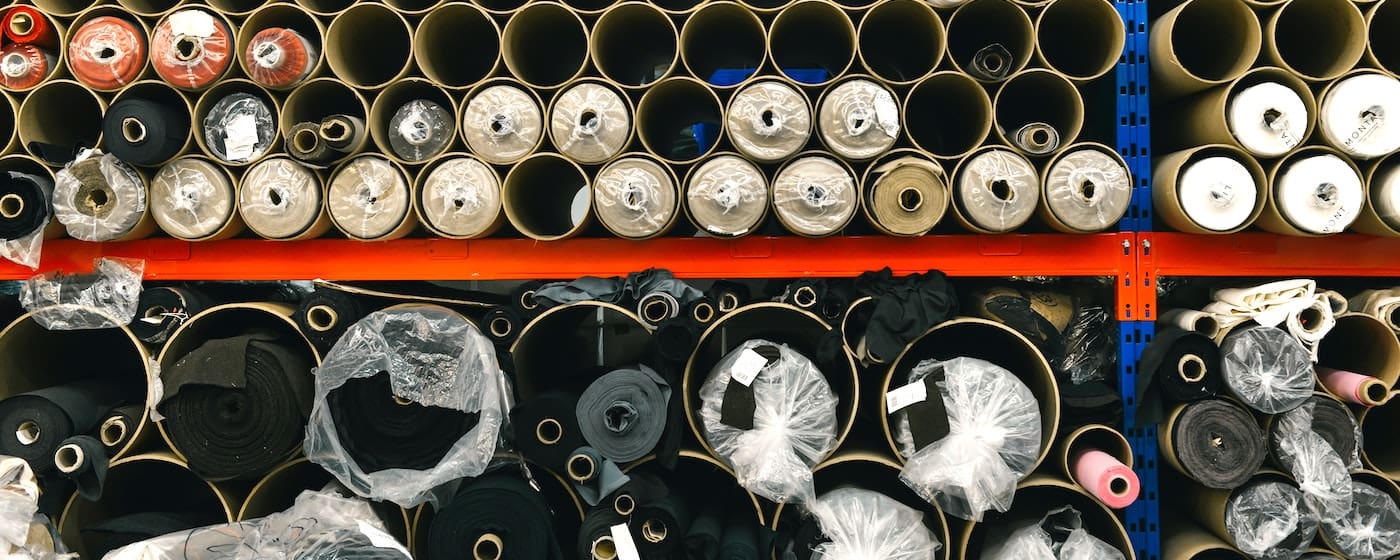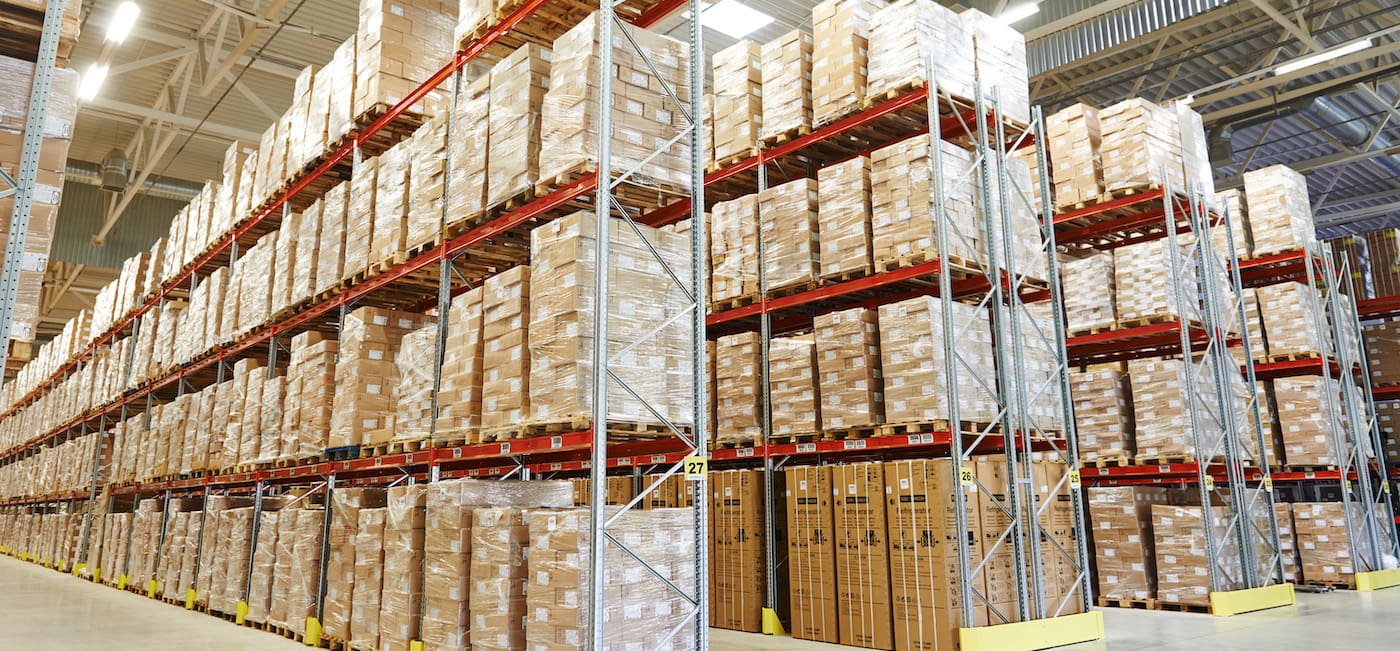Table of Contents
** Minutes
What is raw materials inventory?
The importance of mastering your raw materials inventory
Why you can’t afford to ignore raw materials inventory
Accounting for raw materials inventory
How to calculate the value of your raw materials inventory
How to calculate your raw materials inventory turnover ratio
Best practices for raw materials inventory
When ecommerce businesses talk about “inventory”, they’re usually referring to finished goods inventory — that is, the final product that is sold and shipped to end customers.
However, there are many different types of inventory. If you manufacture or assemble your own products, your supply chain will also involve something called raw materials inventory.
Raw materials inventory is procured, stored, and received before any other products in the supply chain, and is absolutely integral to producing enough high-quality final product.
In this article, we’ll cover what raw materials inventory is, why it’s a critical element within your supply chain, how to calculate it, and best practices for procuring and managing it.
What is raw materials inventory?
Raw materials inventory refers to the materials that are used to create a business’s finished goods. While raw material inventory is not sold to end customers as-is, a company keeps raw materials in stock so that they can turn them into work-in-process (or WIP) inventory or finished goods inventory.
The importance of mastering your raw materials inventory
Raw materials inventory is critical for businesses that manufacture their products, because a business cannot produce finished goods inventory without acquiring raw materials inventory first.
After procuring raw materials inventory from a supplier or other manufacturer, a business keeps it in storage until it is needed for production. During the production process, the raw material becomes work-in-progress inventory as it is being transformed into a new product.
Once the product is complete, the product is considered finished goods inventory, which is ready to be either sold to the end consumer or supplied to a retailer.
Since raw materials inventory plays such an important role in the overall supply chain, manufacturing businesses need to carefully plan their procurement logistics to ensure that they always have enough raw materials inventory on hand to create enough finished product and satisfy demand.
Being able to effectively manage it will also help you create a lean supply chain, which will reduce costs while increasing efficiency.
“We are very impressed by ShipBob’s transparency, simplicity, and intuitive dashboard. So many 3PLs have either bad or no front-facing software, making it impossible to keep track of what’s leaving or entering the warehouse.
On the supply chain side, I just throw in what we placed at the factory into a WRO in the ShipBob dashboard, and I can see how many units we have on-hand, what’s incoming, what’s at docks, and so on. I can see all of those numbers in a few seconds, and it makes life so much easier.”
Harley Abrams, Operations Manager of SuperSpeed Golf, LLC
Why you can’t afford to ignore raw materials inventory
It can be easy to accidentally forget about raw materials inventory — but doing so can have serious consequences for your business. Here are just some of the reasons why it’s important to manage your raw materials inventory proactively.
Varying shelf life
Raw materials are often perishable, and thus need to be used quickly to avoid losses and maintain the quality of goods produced. Businesses need to properly account for their raw materials inventory to ensure that perishable items are utilized before they expire.
Prone to becoming obsolete
When raw materials aren’t utilized fast enough, they can become obsolete. This may be due to the inventory reaching the end of its life cycle, or because the product has lost its market value and demand. If this occurs, even if the raw materials are turned into finished goods, they will no longer be sellable.
This type of scenario is particularly common with fashion and apparel, furniture, and electronics, as these verticals experience extremely quick shifts in trends and technology updates that replace existing products.
Obsolete inventory can result in major losses for a manufacturing company, as a business must still pay inventory carrying costs, even though the inventory is no longer an asset.
Prone to damages
Some types of raw materials are more prone to damages than others, and may get damaged in the transit process, resulting in high costs and cash burn.
For instance, the LCD screens used in manufacturing smartphones are extremely prone to damage. Not only must a business pay for any damaged raw materials, but they will also have to spend more money to procure new inventory to replace the damaged items.
Accounting for raw materials inventory
When businesses accurately account for raw materials, they can keep a better track of their inventory investment throughout the production process. This will allow you to get a better overview of your company’s financial health, and make informed decisions about additional investments based on your pipeline inventory.
When it comes to bookkeeping, the most significant difference is whether you’re accounting for direct or indirect raw materials inventory.
Direct materials inventory refers to the raw materials that are incorporated or transformed into the finished product. For example, for a business that sells miniature paintings, the paint and canvases would qualify as direct raw materials inventory, as these materials are components of the final product ( i.e., the paintings).
Indirect materials inventory, on the other hand, refers to the raw materials that are consumed during the production process, but are not a component of the finished product. For example, fuel, lubricants, protective equipment, and disposable tools are typically considered indirect raw materials inventory.
In inventory accounting, businesses will need to value raw materials at their comprehensive cost, which would include storage, preparation, and shipping.
Moreover, in accrual accounting, the initial purchase of raw materials inventory is either in the form of cash to credit or debit to inventory. Crediting cash reduces cash assets by the inventory amount, and the debiting inventory increases the company’s current assets.
How to calculate the value of your raw materials inventory
To calculate the value of your raw materials inventory, you first need to calculate a few composite items:
- Beginning raw materials inventory: The raw materials inventory that you have in stock at the start of your accounting period. The formula is as follows:
Beginning raw materials inventory = (COGS + Ending raw materials inventory) – Raw materials purchased
- Raw materials purchased: The number of raw materials that you bought within that specific accounting period.
- Cost of goods sold (COGS): The total cost of buying or manufacturing the products that you sell during a specific period. It includes all the costs associated with the manufacturing process such as the materials, labor, and overhead costs.
The usual goal of manufacturing businesses is to calculate the ending raw materials inventory, which will become the beginning raw materials inventory for the next period. You can use the formula below to calculate this:
Ending raw materials inventory = (Beginning raw materials inventory + Raw materials purchased) – COGS
So, let’s say you start out with a beginning raw materials inventory worth $100,000. During the given accounting period, you acquire more raw materials inventory worth $40,0000, and also sell finished goods with a COGS of $120,000. In this example, your ending raw materials inventory will be:
Ending raw materials inventory = ($100,000 + $40,000) – $120,000
Ending raw materials inventory = $20,000
How to calculate your raw materials inventory turnover ratio
You will also need to calculate your raw materials inventory turnover ratio, which is the rate at which raw inventory is used and replaced. This can help you measure the accuracy of your purchasing strategies and inventory forecasting.
The raw materials inventory turnover formula is:
Raw materials inventory turnover = COGS/Average cost of raw materials inventory
Here, the average cost of raw materials inventory can be calculated as follows:
Average cost of raw materials inventory = (Beginning raw materials inventory + Ending raw materials inventory)/2
Let’s calculate raw materials inventory turnover for the previous example. For the business that started out with $20,000 of raw materials inventory, acquired $25,0000 more, and sold $15,000 worth of finished goods, the average cost of raw materials inventory would be calculated as follows:
Average cost of raw materials inventory = ($100,000 + $20,000)/2
Average cost of raw materials inventory = $60,000
Raw materials inventory would therefore be:
Raw materials inventory turnover = 120,000/60,000
Raw materials inventory turnover = 2
Companies typically want to maintain a raw materials inventory turnover of 4-6, which is the ideal balance between replenishment and sales. In this example, the business’s raw materials inventory turnover rate is a little low.
“We roll out new products and designs on our website 1-3 times a month and send new inventory to ShipBob each week. It’s really easy to create new SKUs and restock existing ones using ShipBob’s technology, which is especially important with high inventory turnover.”
Carl Protsch, Co-Founder of FLEO
Best practices for raw materials inventory
For any manufacturing business, efficient management of production inventory is crucial to minimize disruptions to the supply chain. Here are some best practices to implement as you manage your raw materials.
Don’t sacrifice quality for cost
Because your direct raw materials inventory will become your finished inventory, it’s worth investing in quality materials during the product sourcing process.
High-quality and sturdy raw materials may also help you save money and time, as they reduce the risk of challenges that could slow down your production time (such as damage in transit).
Update the reorder level points and safety stock
Make sure you accurately calculate your raw materials inventory to ensure that your stock levels are always updated. This allows you to place timely reorders and replenish stock on time, which ultimately helps you meet customer demand.
Try experimenting with reorder points and reorder quantities to maintain optimal inventory levels.
“ShipBob’s analytics tool is also really cool. It helps us a lot with planning inventory reorders, seeing when SKUs are going to run out, and we can even set up email notifications so that we’re alerted when a SKU has less than a certain quantity left. There is a lot of value in their technology.”
Oded Harth, CEO & Co-Founder of MDacne
How ShipBob helps with raw materials inventory
To transport raw materials seamlessly and efficiently with minimal damage in transit, it’s often a good idea to leave it to the professionals and get a 3PL company to help you move your inventory through the supply chain.
With powerful proprietary software and dozens of fulfillment centers, ShipBob makes it easier to manage your inventory throughout the entire supply chain.
ShipBob’s software lets you track your inventory movement for better supply chain visibility, allowing you to see where your inventory is, how much you have in stock, and when you need to place reorders so you can effectively replenish your raw materials inventory to minimize supply chain disruptions.
ShipBob also helps you optimize your physical inventory management, with teams of warehouse professionals to receive, store, and organize your inventory at the SKU level. Moreover, by keeping accurate records of your inventory, you can streamline the accounting process at the end of a given accounting period.
For businesses importing inventory from China, FrieghtBob significantly reduces transit time to 15-30 days. Under this managed freight program, inventory is loaded onto faster ships and gets it to you 2x faster than comparable LCL products.
Request more information about how ShipBob can assist you in storing and managing your inventory by clicking the button below.
Raw materials inventory FAQs
Here are answers to the most common questions about raw materials inventory.
How do you find raw materials inventory?
You can calculate your average raw materials inventory by adding your ending inventory to your beginning inventory, and then dividing the sum by two.
Do raw materials count as inventory?
Yes. Raw materials are an inventory asset for businesses that manufacture their products.
What account type is raw materials inventory?
Direct raw materials inventory is considered as a current asset on a company’s balance sheet.
How long is the life of raw materials inventory?
The life of raw materials inventory differs depending on the type of goods, although most manufacturers aim for a turnover of 60-90 days.



